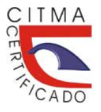Total phenols content in a fermented drink of dried jamaican flowers (Hibiscus Sabdariffa)
Keywords:
Alcoholic beverage, Fermentation, Jamaican flowers, Phenolic content, Quantitative and qualitative characteristicsAbstract
Currently one of the consumers´ dietary requirements are products that provide functional and nutritional value to keep their health in good condition. The consumption of bioactive compounds in wine-type beverages has been influenced by the contribution of phenolic compounds, flavonoids, tannins and other organic acids that result from secondary metabolism. Research on these compounds has determined that they can act as a protective factor against chronic degenerative diseases; therefore, the present study aims to establish the concentration of total phenol content in a fermented beverage made from dehydrated Jamaican flowers obtained under controlled conditions in terms of their cultivation and drying process. The wine-type alcoholic beverage was obtained with a procedure that allows preserving the greatest amount of these components; the physicochemical parameters obtained were: pH=2.8; 12.6 °Bx and 5.37g ác. Trat/L, in addition to a moderate qualitative identification of reducing sugars (+ + +) and the presence of phenols and tannins in abundant valuation scale (+ + +). Finally, a total phenol content was determined by the Folin-Ciocalteu method of 774.352 mg (GAE). L-1, which could not only be related to the fermentation process, but also to preliminary processes such as the maturity index of the flower during harvesting and drying conditions should be considered in order to conserve relevant components that could provide a benefit for their antioxidant effect, which will be of interest for future research.
Downloads
References
ANGIONI, Alberto, PINTORE, Giorgio y CABONI, Pierluigi. Determination of wine aroma compounds by dehydration followed by GC/MS. Journal of AOAC International, Vol. 95, No 3, pp. 813-819. Disponible en: https://doi.org/10.5740/jaoacint.11-313 Visitado: 25 de octubre de 2022.
AOAC Método Oficial (2012). 932.12 – Sólidos Solubles. Gaithersburg: Association of Analytical Communities INTERNATIONAL.
AOAC Método Oficial (2012). 962.12 – Acidez Titulable. Gaithersburg: Association of Analytical Communities INTERNATIONAL.
AOAC Official Methods of Analysis (2012). 960.19: pH of wine. En: Quantitative Chemistry. American Society of Enologists-AOAC.
NAZRALA, Jorge …[et al.] (2009). Manual de técnicas analíticas para mostos y vinos. Mendoza - Argentina, Ediciones INTA. Disponible en: http://hdl.handle.net/20.500.12123/6664 Visitado: 25 de octubre de 2022.
MONASTERIOS YAPU, S. P.(2022). Evaluación del proceso de deshidratado de flor de jamaica (Hibiscus sabdariffa L.) mediante dos métodos de deshidratado-Huarina- La Paz. CIBUM SCIENTIA, Bolivia, Vol. 1, No. 2, pp. 20-38. Disponible en: https://cibumscientia.umsa.bo/index.php/1/article/view/23/23 Visitado: 25 de octubre de 2022.
MORI-MESTANZA, Diner …[et al.]. (2022). Determination of the phenolic content, antioxidant activity and total anthocyanins of a beverage based on aloe vera and Jamaican sorrel (Hibiscus sabdariffa). Diponible en: https://doi.org/10.21203/rs.3.rs-1287358/v1. Visitado: 21 de diciembre de 2022.
PATEL, Seema. (2014). Hibiscus sabdariffa: An ideal yet under-exploited candidate for nutraceutical applications. Biomedicine & Preventive Nutrition, Vol. 4, No. 1, pp. 23-27. Disponible en: https://doi.org/10.1016/j.bionut.2013.10.004 Visitado: 21 de diciembre de 2022.
PÉREZ-LEÓN, Noraida de Jesús, PITA PÉREZ, Katherin y GONZÁLEZ CEPERO, María Caridad (2021). Validación de cultivares cubanos de Flor de Jamaica. Los Palacios - Cuba. Cultivos Tropicales, Vol. 42, No. 4. Disponible en: http://scielo.sld.cu/scielo.php?script=sci_arttext&pid=S0258-59362021000400012 Visitado: 22 de febrero de 2023.
RAMÍREZ-CORTÉS, Benjamín …[et al.] (2011). Cambios en tamaño y características químicas de cálices de jamaica (Hibiscus sabdariffa L.) durante su maduración. Revista Chapingo. Serie horticultura, Vol. 17, No. spe2, pp. 19-31. Disponible en: https://www.scielo.org.mx/scielo.php?pid=S1027-152X2011000500003&script=sci_abstract&tlng=pt Visitado: 25 de octubre de 2022.
SILVA, Vanessa …[et al.] (2018). Chemical composition, antioxidant and antimicrobial activity of phenolic compounds extracted from wine industry by-products. Food control, No. 92, pp. 516-522. Disponible en: https://doi.org/10.1016/j.foodcont.2018.05.031 Visitado: 25 de noviembre de 2022.
SINGLETON, Vernon, ORTHOFER, Rudolf y LAMUELA RAVENTOS, Rosa. (1999). Analysis of total phenols and other oxidation substrates and antioxidants by means of folin-ciocalteu reagent. Methods in enzymology. Academic press, 1999. p. 152-178. Disponible en: https://doi.org/10.1016/S0076-6879(99)99017-1 Visitado: 25 de septiembre de 2022.
VARELA, Ayelén …[et al.] (2022). Caracterización química de vinos Malbec y Cabernet franc provenientes de dos localidades de La Pampa (Argentina), en relación al grado de madurez de las uvas. Facultad de Ciencias Aplicadas a la Industria, Universidad Nacional de Cuyo. Disponible en: https://revistas.uncu.edu.ar/ojs3/index.php/revicap/article/view/5995. Visitado: 25 de mayo de 2022.
ZHEN, Jing, …[et al.] (2016). Phytochemistry, antioxidant capacity, total phenolic content and anti-inflammatory activity of Hibiscus sabdariffa leaves. Food chemistry, No. 190, pp. 673-680. Disponible en: https://doi.org/10.1016/j.foodchem.2015.06.006 Visitado: 25 de abril de 2022.
Downloads
Published
Versions
- 2024-03-07 (2)
- 2023-05-25 (1)
How to Cite
Issue
Section
License
Copyright (c) 2023 Universidad & ciencia

This work is licensed under a Creative Commons Attribution-NonCommercial-ShareAlike 4.0 International License.





















